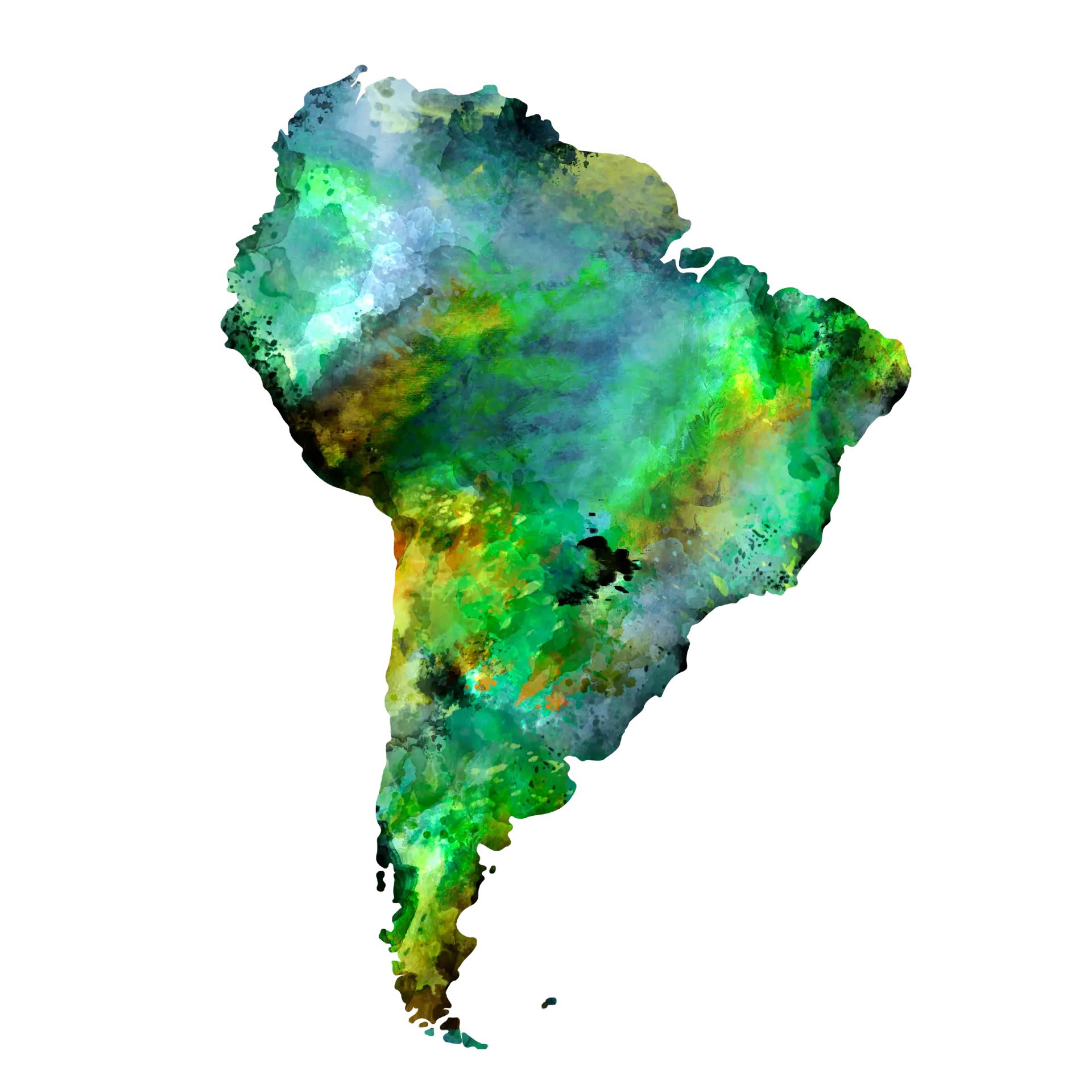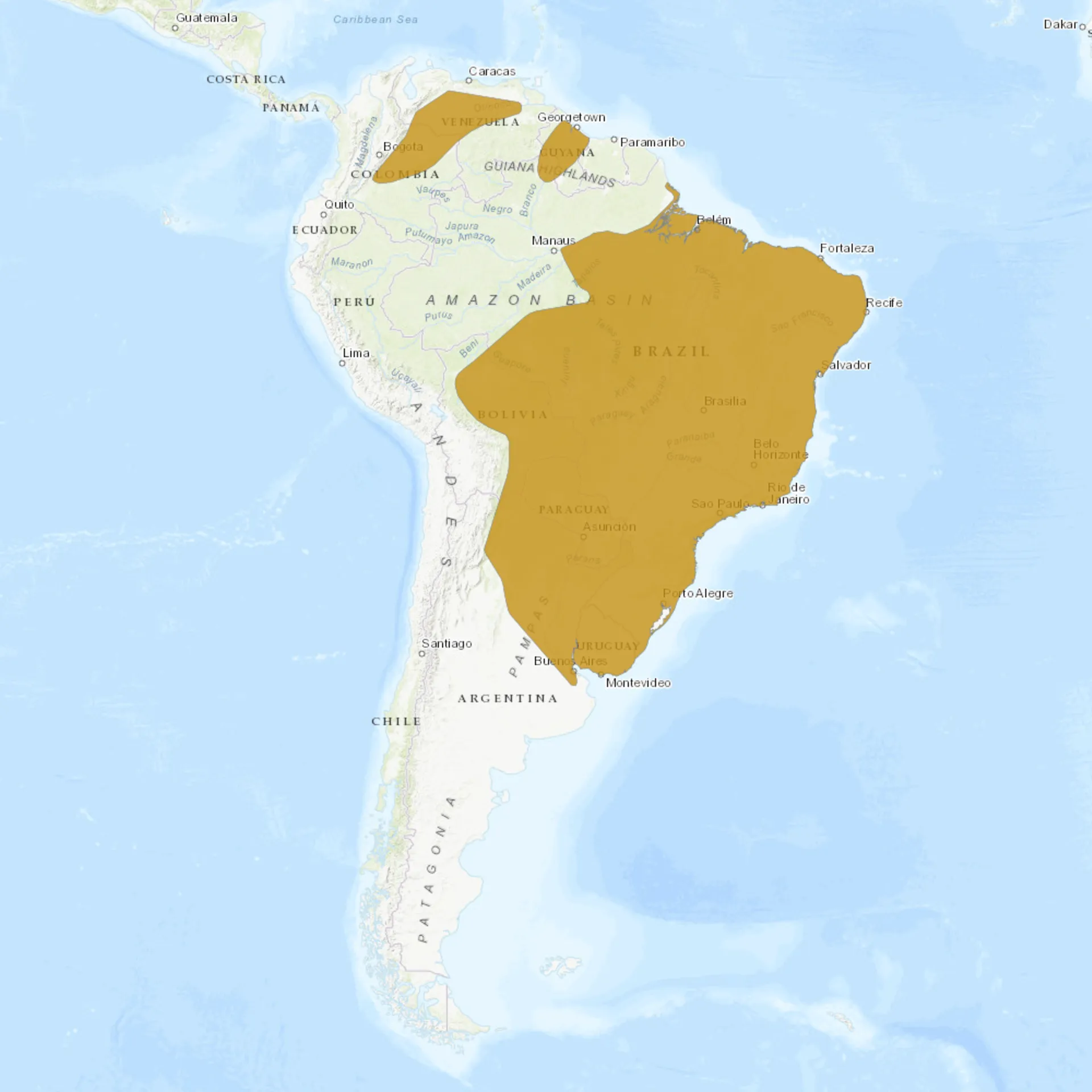Overview
The Brazilian Teal, also known as the Amazonetta brasiliensis, is a small and colorful duck native to South America. It is notably smaller than most ducks, with strikingly distinctive plumage. The male Brazilian Teal has a dark greenish head, a reddish-brown body, and a black bill, while the female is slightly duller with a lighter brown body and a greyish bill. These birds, exhibiting strong pair bonds, are often seen in pairs or small flocks near freshwater lakes, rivers, and marshes.
Brazilian Teals are dabbling ducks, meaning they feed in shallow water by tipping forward and grazing on underwater plants. They are also known for their unique whistling calls, which differ between the sexes. The males typically emit a soft, high-pitched whistle, while the females produce a lower, quack-like sound. This species is relatively quiet compared to other duck species, often seen silently foraging or resting near water bodies.
Adaptable and resilient, the Brazilian Teal thrives in various aquatic environments, including wild and human-altered landscapes. They have been observed living in areas ranging from small, isolated ponds to large, complex wetland systems. Despite habitat loss and other environmental pressures, their population appears stable, reflecting their adaptability to changing environments.
Taxonomy
Kingdom
Phylum
Class
Order
Family
Genus
Species
Type
Current distribution:
The Brazilian Teal is found across a wide range of South America, including countries like Brazil, Argentina, Paraguay, and Uruguay. Its distribution extends from the northern regions of the continent down to the southernmost parts of the continent. It is particularly common in the Pantanal, one of the world's largest tropical wetland areas.
Despite facing habitat loss in some areas, the Brazilian Teal has maintained a stable population across much of its range. They have shown an ability to adapt to altered landscapes, including agricultural and urban areas, provided suitable water bodies exist. This adaptability has helped them to sustain their numbers even in regions where natural habitats have been significantly modified.
Physical Description:
Brazilian Teals are small ducks with compact and streamlined bodies. Males typically display a glossy green head, bright red bill, and chestnut-colored body with black tail feathers. Females, while similar in size, have a more subdued appearance with brownish-grey plumage and a greyish bill, which helps camouflage. Both sexes have striking blue wing patches (speculum) visible during flight, a key identification feature.
Their size is relatively modest compared to other duck species. They have proportionately short legs, which are set back on their bodies, aiding in swimming but making them somewhat awkward on land. Their eyes are bright and expressive, adding to their distinctive appearance. The Brazilian Teal’s plumage remains fairly consistent throughout the year, lacking the dramatic seasonal changes seen in some other duck species.

Lifespan: Wild: ~20 Years || Captivity: ~25 Years

Weight: Male: 0.7-1.1 lbs (320-500 kg) || Female: 0.6-1.0 lbs (280-450 kg)

Length: Male: 15-17 in (38-43 cm) || Female: 14-16 in (36-41 cm)

Wingspan: Male & Female: 24-26 in (60-66 cm)

Top Speed: 50 mph (80 km/h)
Characteristic:
Native Habitat:
Brazilian Teals inhabit many freshwater habitats, from small ponds and marshes to large lakes and slow-moving rivers. They prefer areas with abundant vegetation in and around the water, providing food, shelter, and nesting sites. These ducks are well adapted to natural and man-made aquatic environments, including flooded agricultural fields and urban parks with water bodies.
Their ability to thrive in varied habitats reflects their adaptability and resilience as a species. Brazilian Teals are typically found at low elevations but can also inhabit higher altitude regions, provided suitable wetland habitats exist. They often choose nesting sites well-hidden among dense vegetation or in tree cavities near water, offering protection from predators.
Biomes:
Biogeographical Realms:
Continents:
Diet:
Diet & Feeding Habits:
Brazilian Teals are omnivorous, with a diet that includes a variety of aquatic plants, seeds, and small invertebrates. They feed by dabbling in shallow waters, often tipping to reach food underwater. In addition to natural food sources, they may opportunistically feed on human-provided food in urban or agricultural areas. This adaptable feeding behavior helps them thrive in diverse environments.
Their diet changes seasonally, depending on the availability of food sources. During the breeding season, they may consume more animal matter, such as insects and small fish, to meet increased nutritional needs. Brazilian Teals also exhibit foraging behaviors, including skimming the water surface and upending, where they tip forward to reach food beneath the water while their tails stick up in the air. They may feed during both day and night, adjusting their habits based on disturbance and competition.
Mating Behavior:
Mating Description:
Brazilian Teals form monogamous pair bonds, often staying together for multiple breeding seasons. During the mating season, males perform elaborate displays to attract females, including wing flapping, head bobbing, and vocalizations. These displays not only attract mates but also serve to establish and defend territories. The strong bond between pairs is evident in their coordinated movements and mutual preening behavior.
Nesting typically takes place in dense vegetation near water or in tree cavities. Females are primarily responsible for nest building and incubation, while males provide protection and may assist in feeding the young. The nests are well-concealed, lined with down feathers, and close to water for easy access. After hatching, ducklings are precocial, meaning they are relatively mature and mobile from birth, quickly learning to swim and feed under the guidance of their parents.
Reproduction Season:
Birth Type:
Pregnancy Duration:
Female Name:
Male Name:
Baby Name:
Social Structure Description:
Brazilian Teals are generally found in pairs or small groups, reflecting their monogamous breeding system. They exhibit strong pair bonds, often engaging in mutual preening and coordinated behaviors. Outside the breeding season, they may gather in larger flocks, especially in areas with abundant food resources.
Social interactions among Brazilian Teals include a variety of vocal and physical displays used for communication and territory defense. They are not highly territorial, but breeding pairs will defend nesting areas. Their social structure allows for efficient foraging and predator awareness, as individuals can alert others to potential threats. These ducks maintain a hierarchy in larger congregations, with dominant individuals having better resource access.
Groups:
Conservation Status:
Population Trend:
The Brazilian Teal has a stable and widespread population across South America. They are commonly found in suitable habitats throughout their range, indicating a healthy population status. Despite facing challenges like habitat loss and environmental pollution in some regions, they have shown resilience and adaptability to changing environments.
Their population stability can be attributed to their broad environmental tolerance and flexible feeding habits. Brazilian Teals can thrive in natural and human-altered landscapes, which has helped them maintain their numbers even in areas with significant habitat changes. Continued monitoring and conservation efforts are essential to ensure this species remains abundant.
Population Threats:
Habitat loss and degradation are the primary threats to the Brazilian Teal, particularly in areas where wetlands are drained for agriculture or urban development. Pollution, including pesticide runoff and water contamination, can also impact their health and food sources. Hunting and egg collection pose additional threats in some regions, although this is less significant than habitat issues.
Climate change presents a long-term threat, potentially altering their habitat and food availability. Changes in precipitation patterns and wetland water levels can impact their breeding and feeding grounds. Conservation efforts focused on protecting and restoring wetland habitats are crucial for the continued stability of the Brazilian Teal population.
Conservation Efforts:
Conservation efforts for the Brazilian Teal include protecting and restoring wetland habitats, which are crucial for survival. Environmental regulations and policies to preserve natural water bodies and regulate wetland drainage are important. Conservation organizations also work to raise awareness about the importance of wetlands for biodiversity, including species like the Brazilian Teal.
In some areas, specific projects focus on monitoring populations and habitat conditions, providing valuable data for conservation planning. Efforts to reduce water pollution and manage agricultural practices near wetlands also benefit this species. International cooperation is essential, given the bird’s wide distribution across multiple countries in South America.
Additional Resources:
Fun Facts
- Brazilian Teals are one of the few duck species where both males and females have a whistling call, which they use for communication.
- They are strong fliers, capable of long-distance flights, particularly during migration or searching for new habitats.
- Unlike many duck species, Brazilian Teals have claws on their webbed feet, an adaptation that helps them perch on branches.
- These ducks engage in “feigned death” behavior, playing dead to escape predators.
- The iridescent blue patch on their wings, known as the speculum, is particularly visible during flight and is a key identification feature.
- Brazilian Teals can adapt their diet seasonally, showing great flexibility in their feeding habits.
- They often form lifelong pair bonds, a trait not common in many duck species.
- During the breeding season, the female lays a clutch of about 6 to 12 eggs, which are incubated for 24 to 26 days.
- Brazilian Teals are known to reuse the same nesting sites year after year, showing strong site fidelity.
- They are one of the few species of ducks that are relatively comfortable perching in trees, thanks to their unique clawed webbed feet.





















































































